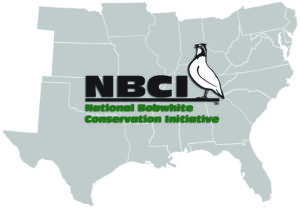Thomas V. Dailey, Ph.D.
NBCI Science Coordinator
A striking bobwhite phenomenon is their covey call in fall. As sure as the approach of winter, broods and adults are re-organizing into coveys, and apparently this process is facilitated by pre-dawn communication. The calls are the basis for sophisticated biological assessments such as NBCI’s Coordinated Implementation Program, and for landowners and quail hunters to identify the presence and abundance of bobwhites. Check out several NBCI field videos on listening for the covey call on NBCI’s technical web site Quailcount.org, and on the NBCI YouTube channel (search on Bobwhites’ Koi-Lee).
The past few years’ high quail numbers in much of the species’ range provide a once-in-a-lifetime opportunity to set a personal record, either for the most quail you’ve ever heard, or, if quail are scarce in your area, to measure, via sound, if they have reappeared. In times of abundance and mild weather some bobwhites move from habitat strongholds to marginal habitat, so you might be pleasantly surprised by their reappearance.
Bobwhites roost during the mild weather of fall in herbaceous vegetation in open landscapes (grass, weeds, crop fields, etc.), rather than among shrubs, briars, fence rows and woods. Perhaps these open-landscape nocturnal roost sites are selected to avoid raptor perches in trees and mammalian travel paths along habitat edges. Considering that bobwhites spend more of their life in nocturnal roost habitat than in any other single activity, this habitat is important to investigate.
A best (research) practice is to find, flush and count quail in the coveys you hear calling. Flushing calling coveys increases your identification of roosting habitat, accuracy of identifying the locations of calling coveys, and accuracy of total quail, via calculation of actual average covey size. Coveys often move away from roosts soon after calling, so try to flush them soon after sunrise.
Among wildlife vocalizations, bobwhites are unique because their calling in fall is predictably 15-40 minutes before sunrise. This “koi lee” sounding call likely facilitates the formation of coveys from broods. Calling is best heard on mornings when barometric pressure is high, wind speed is low, and there are few clouds. You can hear calling quail about 547 yards away, or an area around you of 194 acres.
If you hear one covey calling, research indicates there could be another covey present, and you could double your observation to an estimated two coveys on 194 acres. A rule-of-thumb average covey size is 12 quail, which translates to an estimated 1 quail per 8 acres. In the better quail habitat areas, biologists expect 1 quail per 2 to 4 acres.
If bobwhites are scarce in your area, here’s a tip—during the pre-sunrise listening period play the fall covey call with your smartphone and a Bluetooth speaker. When quail are scarce this can be the catalyst for a wild covey to respond.
Bobwhite biologists have conducted considerable research to understand fall bobwhite calling behavior. NBCI’s new online version of the National Quail Symposium Proceedings has many of these study reports—search on “covey calling.” Several NBCI partners have elaborate protocol on the technique–search the internet for “covey calling” or check these websites:
Tall Timbers Research Station, http://talltimbers.org/how-many-bobwhite-coveys-are-there/
University of Missouri http://extension.missouri.edu/p/G9433.
Texas A&M University https://www.youtube.com/watch?v=3Bn2p8sCTW4
All bobwhite enthusiasts should take advantage of this unique opportunity to better understand our favorite bird. As said by the biologist in the Koi-Lee YouTube about hearing fall coveys, “It doesn’t get a whole lot more exciting.”


